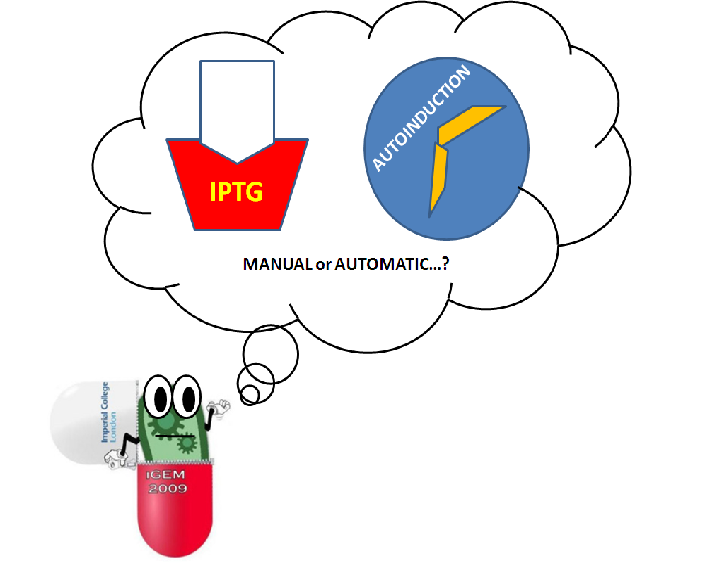Team:Imperial College London/Temporal Control/Autoinduction
From 2009.igem.org

Conventional induction relies on adding small amounts of IPTG into a cell culture. Autoinduction media instead rely on culture conditions for induction. When glucose levels are low due to cellular consumption, the CRP promoter in cells is activated, and induction occurs automatically. Compared to IPTG, current methods of autoinduction allow for higher density without the need to monitor cell growth [1].
For the autoinduction media, it may include one or more carbon sources selected from the group consisting of glucose, lactose, glycerol, rhamnose, arabinose, succinate, fumarate, malate, citrate, acetate, maltose and sorbitol. The secondary carbon source involves the import and consumption of lactose and glycerol [2].
Relevance to our project
We are not using autoinduction for ensuring high protein density as it was originally intended to. Instead, we are using autoinduction for ensuring a time delay before encapsulation occurred(Glucose time delay assay). Therefore, we not only have a simplistic cell growth model to take into account. Instead, we will also have to take note of the cell growth and its changes when protein production is induced. The time duration will no longer be purely overnight, but rather it will be about a whole day (growth to high cell density plus around 6 hours of protein production).
We have tried to optimize the growth conditions. We have decided that the nitrogen source 0.2% Casamino acids is necessary for cell growth [modifying of Endy protocol, Larry], while glycerol should be omitted as it will be taken up similar to a secondary carbon source. Preliminary experimental data has shown that with 0.05% glucose, the switch point occurs after about 7 hours.
 "
"




